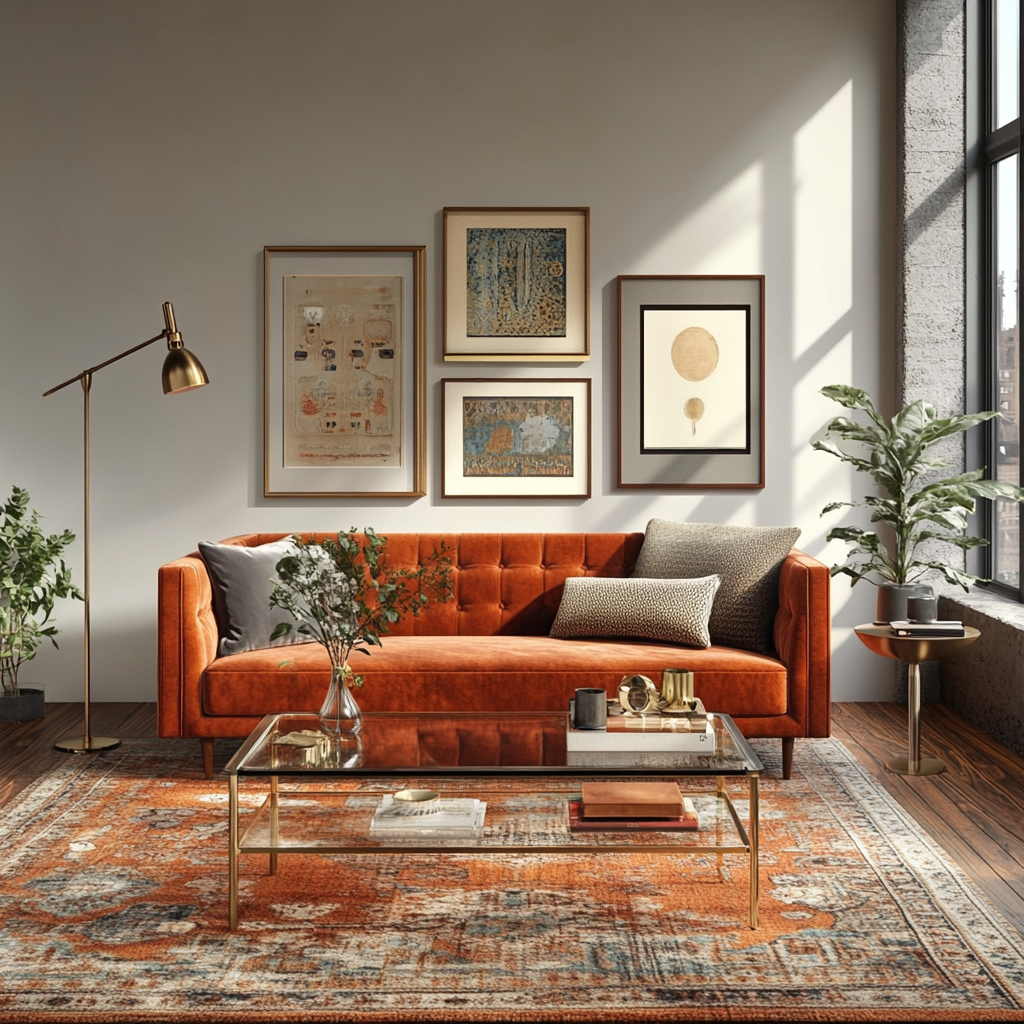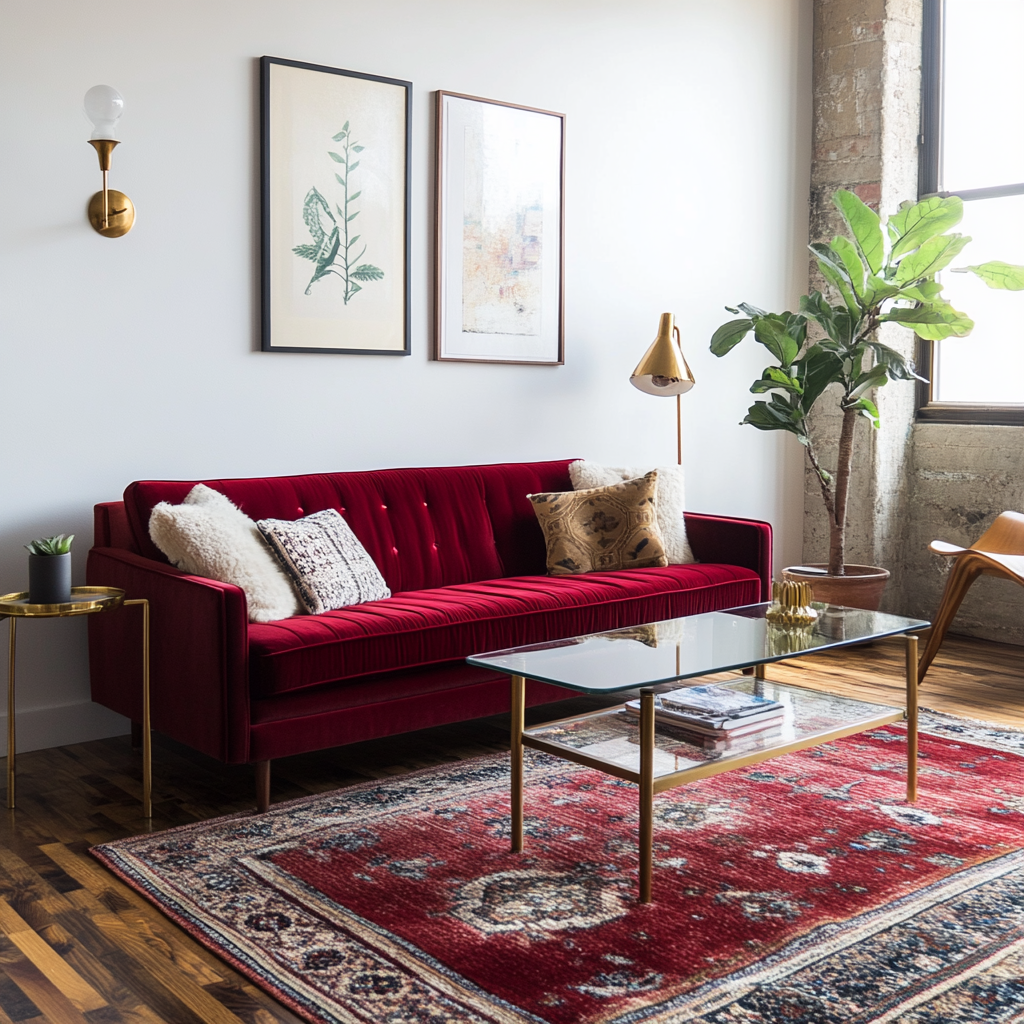
Ever walk into a space and feel like it tells a story—one that mixes the charm of the past with the freshness of the present? That’s the magic of blending vintage and modern interior design. It’s not about choosing between old and new—it’s about bringing the best of both worlds together to create a space that feels stylish, personal, and timeless.
Let’s explore how you can master this art and give your home a look that’s uniquely yours.
Step 1: Get to Know the Styles
What is Vintage Design, Really?
Vintage design isn’t just old stuff. It’s a curated celebration of decades gone by—anywhere from the roaring ’20s to the groovy ’80s.”These pieces often showcase beautiful craftsmanship, warm tones, and a charming sense of nostalgia that adds depth and personality to any space.”
Common vintage features:
- Rich textures and floral prints
- Ornate, well-loved furniture
- Warm tones like mustard yellow, deep reds, and soft blues
- Character-filled heirlooms and antiques
A claw-foot tub, an old-school sideboard, or a weathered chandelier can instantly anchor a room with charm and warmth.
So What’s Modern Design?
Think sleek, clean, and practical. Modern interiors pull from movements like Bauhaus and minimalism. It’s about function, flow, and making room for life to happen.
Modern design staples:
- Clean lines and open spaces
- Neutral color schemes—think black, white, gray
- Glass, metal, polished woods
- Functional furniture with a minimalist feel
Picture a crisp sectional sofa under a gallery wall or sunlight streaming through big, open windows. That’s modern at its best.
Why Not Just Pick One?
Because mixing them creates serious magic.
Pairing the soul of vintage with the simplicity of modern results in rooms that feel both lived-in and fresh. A worn-in leather armchair next to a sleek floor lamp? Perfection. You get the richness of history with the ease of modern living.

Step 2: Plan It Out
Take a Good Look at Your Space
Before you start styling, assess the room:
- How much natural light do you get?
- Are there architectural elements worth highlighting (like crown molding or a fireplace)?
- What’s your focal point—a vintage dresser or a contemporary art piece?
Also, consider proportions. Oversized vintage pieces can crowd a small space, while minimalist modern pieces may fade in a large room.
Define Your Style
“What sets your heart racing—bold vintage patterns that tell a story, or the clean, calming lines of Scandinavian simplicity?”
Create a mood board to help you visualize how these styles might merge. You could go retro in the living room and keep things modern in the kitchen.
Create a Cohesive Color Palette
One of the trickiest parts of mixing styles is getting the colors right. Start with a neutral base—soft whites, taupe, or greige—and layer in vintage-inspired hues like burnt orange or seafoam green. Think vintage velvet cushions on a modern cream sofa or a mid-century rug anchoring a glass coffee table.
Pick Your Statement Pieces
Every room needs a few stars. Whether it’s a vintage writing desk or a sleek modular sofa, let these pieces set the tone. Then surround them with complementary items from the opposite style for balance.

Step 3: How to Mix Like a Pro
Start with a Style Anchor
Choose a dominant style—vintage or modern—to ground the room. Then add accents from the other. For example, build a clean, modern space and pop in vintage decor for warmth and soul.
Mix Up Materials and Textures
“Layering materials is where vintage soul meets modern edge.”
- Try pairing a raw wood vintage console with a sleek glass-top table for a striking contrast.”
- Add a Persian rug to a sleek, modern space
- Combine velvet cushions with leather and linen for a tactile mix
Balance Scale and Proportion
A giant armoire won’t pair well with a tiny end table. Try matching a vintage statement piece with bold, modern lighting or placing delicate modern decor atop ornate vintage furniture.
Let Art Be Your Bridge
Use art to unify the look. A modern abstract painting above a vintage sideboard? Yes, please. Or frame antique maps in contemporary frames for an unexpected twist.

Step 4: Choose the Right Furniture
Sourcing Vintage
Vintage furniture tells a story. Look for:
- Quality pieces with character (even if a little worn)
- Unique finds at flea markets, estate sales, or online vintage stores
- Items you can refinish or repurpose
Focus on statement pieces—armoires, mirrors, desks—that bring history into your home.
Step 4: Choose the Right Furniture
Sourcing Vintage
Vintage furniture tells a story. Look for:
- Quality pieces with character (even if a little worn)
- Unique finds at flea markets, estate sales, or online vintage stores
- Items you can refinish or repurpose
Focus on statement pieces—armoires, mirrors, desks—that bring history into your home.
Selecting Modern Pieces
Modern furniture should ground the space. Look for:
- Sleek lines and smart designs
- Neutral tones and simple silhouettes
- Functional pieces like storage sofas or nesting tables
These items keep your room feeling fresh and uncluttered.
Make It Work Together
Mixing is all about balance:
- Vintage dining table + modern chairs = design harmony
- Modern bed + antique nightstands = cozy-meets-clean

Step 5: Let Lighting Tie It All Together
Layer Your Lighting
Use a mix of lighting types to highlight both styles:
- A vintage chandelier with modern floor lamps
- Sleek task lighting paired with retro sconces
- Warm ambient lighting to soften hard lines
Don’t Be Afraid to Mix Fixtures
Vintage lights may need rewiring, but they can be the jewelry of the room. Likewise, modern LED strips or pendant lights can spotlight your favorite old-school finds.

Step 6: Accessorize Like a Stylist
Decor That Bridges the Gap
Mirrors, artwork, and sculptures can pull it all together. Try:
- Abstract modern art in vintage frames
- Antique vases styled on minimal open shelving
- Sculptural objects placed beside distressed decor
Play with Textiles
Layer different eras in your fabrics:
- Drape a vintage throw over a modern chair
- Use retro floral curtains in a sleek kitchen
- Combine mid-century chairs with patterned pillows
Don’t Forget the Greenery
“Plants are the ultimate design chameleons—whether it’s a leafy fiddle leaf fig or trailing ivy, they soften the clean edges of modern spaces and bring fresh energy to vintage décor.”
Add a Statement Piece
A bold accessory—like a large mirror, unique artwork, or an antique clock—can serve as a beautiful bridge between your two styles.

Final Thoughts: Bringing It All Together
Balance is Key
Make sure one style doesn’t overpower the other. Use symmetry and repeated elements to create visual rhythm—like modern lighting flanking a vintage mirror.
Make It Personal
Your home should tell your story. Display your treasures, travel mementos, or family pieces proudly. That’s what makes a space feel truly special.
Let Your Design Evolve
Styles change—and so should your home. Don’t be afraid to swap out pieces over time or refresh your space with seasonal updates.
Common Pitfalls to Avoid
- “Filling your space with too many statement pieces can make it feel cluttered and chaotic.”
- Mixing clashing colors or textures without a common thread
- Ignoring scale and proportion
- Losing your personal style in the trend
FAQs
Q: Why is mixing vintage and modern so trendy?
It gives your space soul. You get the warmth of history with the function of today’s design.
Q: How do I keep things balanced?
Pick one style as your foundation, then layer in touches of the other to create depth.
Q: Can I mix furniture from different eras?
Absolutely. Just keep an eye on unifying elements like color, material, or shape.
Q: What vintage pieces should I start with?
Start small—maybe a vintage mirror or coffee table. Let it inspire the rest.
Q: Is it expensive to mix styles?
Not at all! Thrift stores, flea markets, and online marketplaces are full of affordable gems. Combine them with accessible modern brands like IKEA or CB2 for a budget-friendly blend.